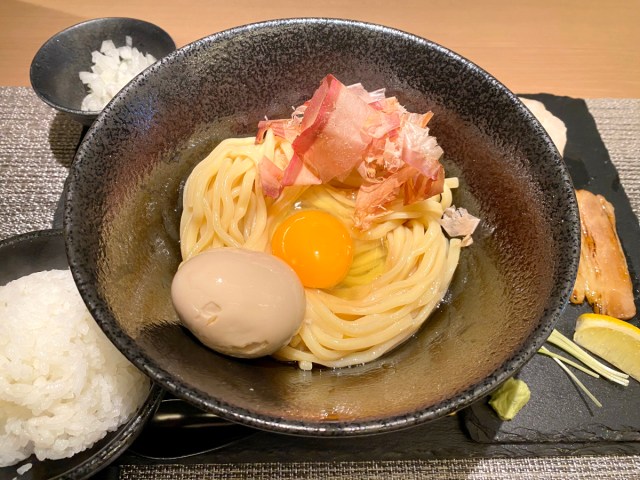
Does this lesser-known noodle variant of the quick-and-easy tamago kake gohan (TKG) have what it takes to become the next big thing?
One of the most enduringly popular breakfast dishes in Japan is called tamago kake gohan (egg over rice), or TKG in slang. Raw egg (which is considered safe to eat in Japan) is mixed into rice and supplemented with a dash of soy sauce and other seasonings. It’s a simple but yummy meal and easy to make in a time crunch.
This month, a new restaurant specializing in a variation of the dish using noodles instead of rice has opened in Tokyo’s central Jimbocho neighborhood. Fujii, as the restaurant is called, is only a one-minute walk from Jimbocho Station, which makes it very easy to access. Of course, our Japanese-language reporter and noodle aficionado P.K. Sanjun had to go and see for himself what tamago kake men, or TKM, was all about. It would be his first time eating it.
▼ The exterior of Fujii
On the day of his visit, P.K. ordered the Deluxe Pork TKM dish for 1,200 yen (US$8) (for reference, the regular TKM costs 950 yen). He could order a small, medium, or large portion of noodles for the same price, and he choose the medium size. It was interesting that the meal also came with a small bowl of rice. He sat at the shiny-new counter and waited only a few minutes until his food arrived. The server instructed him to mix everything in the main bowl together before anything else and then add any desired seasonings.
He mixed the main dish until it was nicely blended and then slurped up a bite. The noodles were good! The kaeshi, or light blend of soy sauce, sugar, and mirin coating the noodles originally, wasn’t as strong as he had predicted, and he could taste the egg first and foremost. Apart from the different texture of the noodles, it didn’t actually taste far off from TKG at all.
While you can find chilled or hot noodles in TKM, Fujii uses chilled noodles, and the quality of the noodles themselves also came through to P.K. He supposed that such a dish consisting of relatively simple ingredients needed each one to really be at the top of its game.
He then experimented by adding some seasonings to the mix such as onion, wasabi, and lemon. Out of those, the wasabi seemed to have the most incredible compatibility with the TKM. The grilled chashu pork on the side was also mouth-wateringly delicious.
Once all of his noodles were gone, P.K. dumped the small bowl of rice into the main dish to soak up the last remaining bit of the egg mixture. It was perfection. He thought it was funny to think that his meal had started as TKM but actually finished as TKG. The transition from one to the other was flawless.
All in all, it was a truly delicious meal, and P.K. would absolutely go back again for more TKM. While its simplistic nature didn’t result in any kind of overwhelmingly powerful taste, he thought it was perfect for those times when you might want a relatively light meal. In fact, he thought it might be an excellent way to fill your stomach after a bit of drinking at night. He hopes more restaurants and izakaya begin offering TKM on their menus as standard practice once the word spreads.
This experience also left P.K. wondering: What will be the next popular variation of TKG? How about tamago kake pan (TKP), or egg over bread? In any case, we love experimenting with fresh takes on various dishes, so you can bet we’ll be there whenever the next new TKG-inspired restaurant opens.
Restaurant information
Fujii / 二二一(ふじい)
Address: Tokyo-to, Chiyoda-ku, Kanda Jimbocho 2-2-38
東京都千代田区神田神保町2-2-38
Open 11 a.m.-3 p.m., 6 p.m.-1o p.m.
Photos © SoraNews24
● Want to hear about SoraNews24’s latest articles as soon as they’re published? Follow us on Facebook and Twitter!
[ Read in Japanese ]

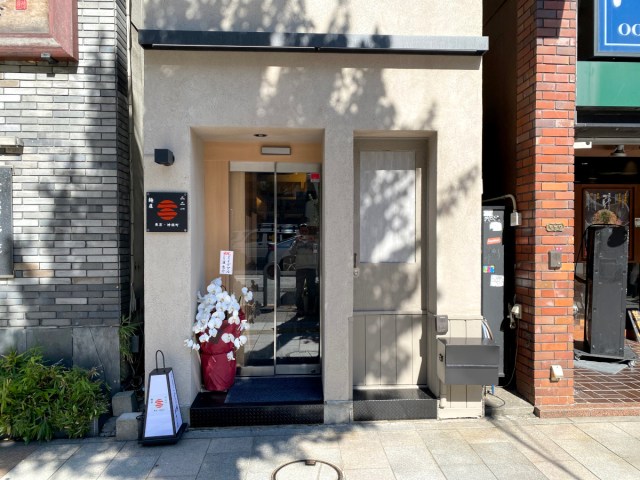
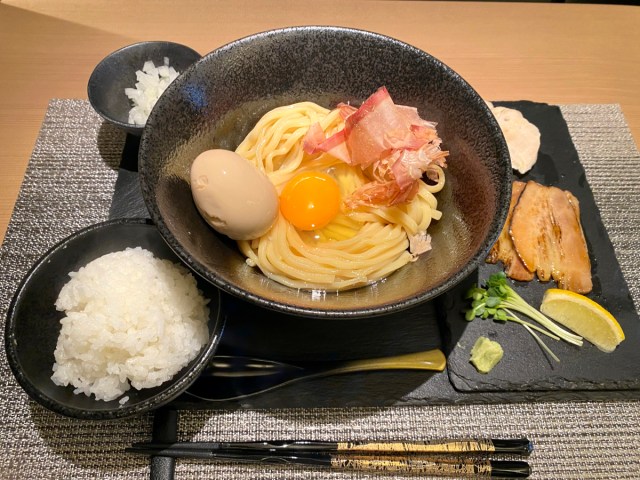
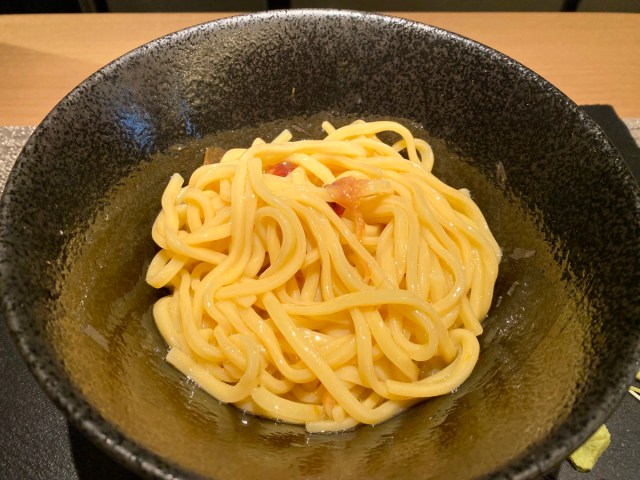
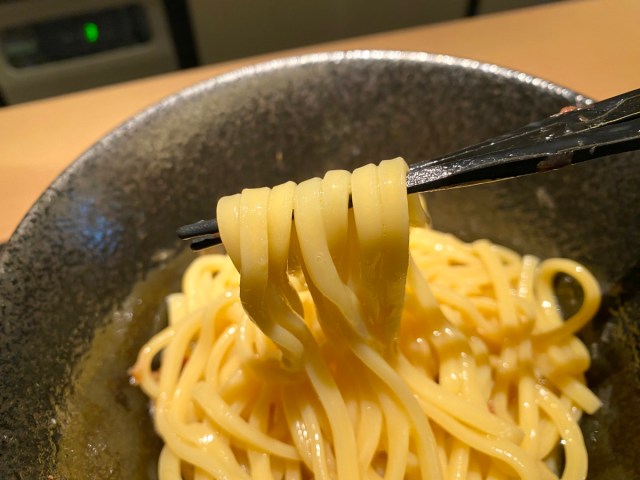
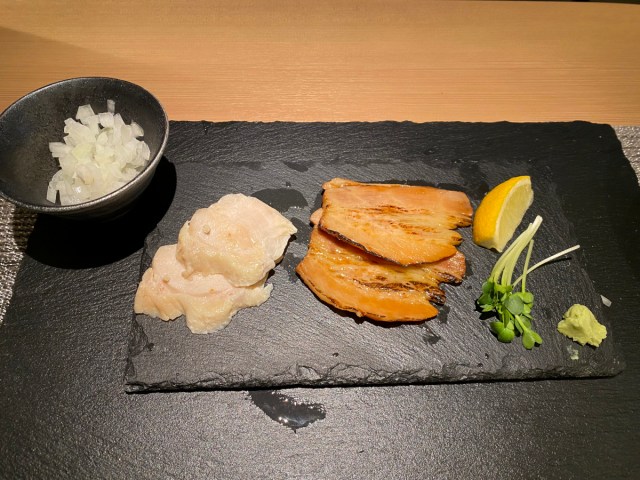
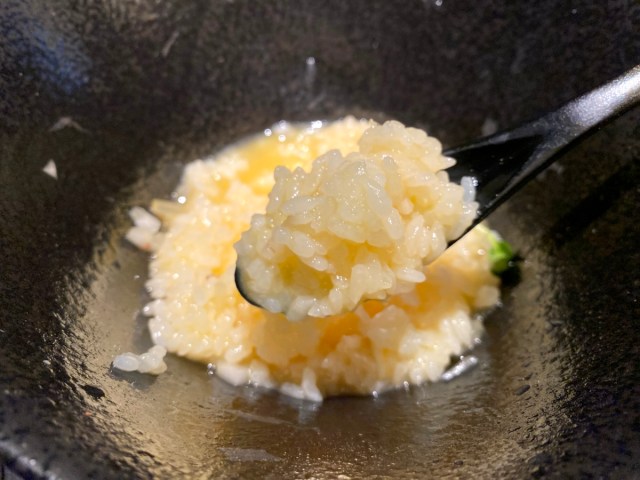
 How to get a beef bowl breakfast in Japan for only 290 yen (some assembly required)
How to get a beef bowl breakfast in Japan for only 290 yen (some assembly required) Celebrate TGK Day with a classic of Japanese kitchens, but with some luxurious ingredients
Celebrate TGK Day with a classic of Japanese kitchens, but with some luxurious ingredients Ultimate TKG: We’ll never eat tamago kake gohan the old way again! 【Sora Kitchen】
Ultimate TKG: We’ll never eat tamago kake gohan the old way again! 【Sora Kitchen】 Tokyo Skytree to light up as three traditional Japanese meals in honour of “Washoku Day”
Tokyo Skytree to light up as three traditional Japanese meals in honour of “Washoku Day” Raw eggs may lead to heads as bald as eggs
Raw eggs may lead to heads as bald as eggs Foreigner’s request for help in Tokyo makes us sad for the state of society
Foreigner’s request for help in Tokyo makes us sad for the state of society Seaside scenery, history, and so many desserts on Yokohama’s Akai Kutsu【Japan Loop Buses】
Seaside scenery, history, and so many desserts on Yokohama’s Akai Kutsu【Japan Loop Buses】 Japanese city loses residents’ personal data, which was on paper being transported on a windy day
Japanese city loses residents’ personal data, which was on paper being transported on a windy day Ghibli Park now selling “Grilled Frogs” from food cart in Valley of Witches
Ghibli Park now selling “Grilled Frogs” from food cart in Valley of Witches Japan’s summertime towelket pillowcases are even better with the addition of Ghibli stars【Photos】
Japan’s summertime towelket pillowcases are even better with the addition of Ghibli stars【Photos】 Historical figures get manga makeovers from artists of Spy x Family, My Hero Academia and more
Historical figures get manga makeovers from artists of Spy x Family, My Hero Academia and more Should you add tartar sauce to Japanese curry rice? CoCo Ichi makes diners an unusual offer
Should you add tartar sauce to Japanese curry rice? CoCo Ichi makes diners an unusual offer Smash Bros. director Sakurai stabs Kirby in the face, has delicious justification for it
Smash Bros. director Sakurai stabs Kirby in the face, has delicious justification for it Toyota built a life-sized Miraidon Pokémon and are letting people test drive it this weekend
Toyota built a life-sized Miraidon Pokémon and are letting people test drive it this weekend Akihabara pop-up shop sells goods made by Japanese prison inmates
Akihabara pop-up shop sells goods made by Japanese prison inmates McDonald’s new Happy Meals offer up cute and practical Sanrio lifestyle goods
McDonald’s new Happy Meals offer up cute and practical Sanrio lifestyle goods Japanese ramen restaurants under pressure from new yen banknotes
Japanese ramen restaurants under pressure from new yen banknotes French Fries Bread in Tokyo’s Shibuya becomes a hit on social media
French Fries Bread in Tokyo’s Shibuya becomes a hit on social media Studio Ghibli releases new action figures featuring Nausicaä of the Valley of the Wind characters
Studio Ghibli releases new action figures featuring Nausicaä of the Valley of the Wind characters Red light district sushi restaurant in Tokyo shows us just how wrong we were about it
Red light district sushi restaurant in Tokyo shows us just how wrong we were about it New private rooms on Tokaido Shinkansen change the way we travel from Tokyo to Kyoto
New private rooms on Tokaido Shinkansen change the way we travel from Tokyo to Kyoto Tokyo Tsukiji fish market site to be redeveloped with 50,000-seat stadium, hotel, shopping center
Tokyo Tsukiji fish market site to be redeveloped with 50,000-seat stadium, hotel, shopping center Beautiful Ghibli sealing wax kits let you create accessories and elegant letter decorations【Pics】
Beautiful Ghibli sealing wax kits let you create accessories and elegant letter decorations【Pics】 Studio Ghibli releases Kiki’s Delivery Service chocolate cake pouches in Japan
Studio Ghibli releases Kiki’s Delivery Service chocolate cake pouches in Japan New definition of “Japanese whiskey” goes into effect to prevent fakes from fooling overseas buyers
New definition of “Japanese whiskey” goes into effect to prevent fakes from fooling overseas buyers Our Japanese reporter visits Costco in the U.S., finds super American and very Japanese things
Our Japanese reporter visits Costco in the U.S., finds super American and very Japanese things All-you-can-drink Starbucks and amazing views part of Tokyo’s new 170 meter-high sky lounge
All-you-can-drink Starbucks and amazing views part of Tokyo’s new 170 meter-high sky lounge More foreign tourists than ever before in history visited Japan last month
More foreign tourists than ever before in history visited Japan last month New Pokémon cakes let you eat your way through Pikachu and all the Eevee evolutions
New Pokémon cakes let you eat your way through Pikachu and all the Eevee evolutions Disney princesses get official manga makeovers for Manga Princess Cafe opening in Tokyo
Disney princesses get official manga makeovers for Manga Princess Cafe opening in Tokyo Sales of Japan’s most convenient train ticket/shopping payment cards suspended indefinitely
Sales of Japan’s most convenient train ticket/shopping payment cards suspended indefinitely Sold-out Studio Ghibli desktop humidifiers are back so Totoro can help you through the dry season
Sold-out Studio Ghibli desktop humidifiers are back so Totoro can help you through the dry season Japanese government to make first change to romanization spelling rules since the 1950s
Japanese government to make first change to romanization spelling rules since the 1950s Ghibli founders Toshio Suzuki and Hayao Miyazaki contribute to Japanese whisky Totoro label design
Ghibli founders Toshio Suzuki and Hayao Miyazaki contribute to Japanese whisky Totoro label design Doraemon found buried at sea as scene from 1993 anime becomes real life【Photos】
Doraemon found buried at sea as scene from 1993 anime becomes real life【Photos】 Tokyo’s most famous Starbucks is closed
Tokyo’s most famous Starbucks is closed One Piece characters’ nationalities revealed, but fans have mixed opinions
One Piece characters’ nationalities revealed, but fans have mixed opinions We asked a Uniqlo employee what four things we should buy and their suggestions didn’t disappoint
We asked a Uniqlo employee what four things we should buy and their suggestions didn’t disappoint Princesses, fruits, and blacksmiths: Study reveals the 30 most unusual family names in Japan
Princesses, fruits, and blacksmiths: Study reveals the 30 most unusual family names in Japan The best place to eat Japanese breakfast for US$2: Cheap food hack for locals and tourists
The best place to eat Japanese breakfast for US$2: Cheap food hack for locals and tourists Trying some Umui sauces made only on a remote Japanese island with a population of 50【Taste test】
Trying some Umui sauces made only on a remote Japanese island with a population of 50【Taste test】 We ate all eight kinds of cold noodles from 7-Eleven and here’s our favourites【Taste test】
We ate all eight kinds of cold noodles from 7-Eleven and here’s our favourites【Taste test】 Eat Japanese cuisine like an epicure with the updated Ultimate NTO natto mixer from Takara Tomy
Eat Japanese cuisine like an epicure with the updated Ultimate NTO natto mixer from Takara Tomy Japanese restaurant serves extra wide noodles next to Tokyo Station
Japanese restaurant serves extra wide noodles next to Tokyo Station We found the prettiest TKG ever at a restaurant specializing in raw eggs on rice in Tokyo
We found the prettiest TKG ever at a restaurant specializing in raw eggs on rice in Tokyo Japan’s first-ever wanko soba conveyor belt restaurant opens in Tokyo
Japan’s first-ever wanko soba conveyor belt restaurant opens in Tokyo Four things you should eat at Japanese chain Ringer Hut, according to staff who work there
Four things you should eat at Japanese chain Ringer Hut, according to staff who work there Turtle-shaped train station in Japan features gigantic tortoise head sticking out of its roof
Turtle-shaped train station in Japan features gigantic tortoise head sticking out of its roof Which Japanese conveyor belt sushi chain has the best egg sushi?【Taste test】
Which Japanese conveyor belt sushi chain has the best egg sushi?【Taste test】 Mr. Sato warms an egg in his armpit for a delicious Japanese dish【SoraKitchen】
Mr. Sato warms an egg in his armpit for a delicious Japanese dish【SoraKitchen】 Japan super budget dining – What’s the best way to spend 1,000 yen at sushi restaurant Sushiro?
Japan super budget dining – What’s the best way to spend 1,000 yen at sushi restaurant Sushiro? All-Noodle Artisan Marugame udon restaurant operating in Tokyo, only 30 percent pass test
All-Noodle Artisan Marugame udon restaurant operating in Tokyo, only 30 percent pass test Pet turtle in Japan lays clutch of eggs in owner’s apartment, owner tosses them into frying pan
Pet turtle in Japan lays clutch of eggs in owner’s apartment, owner tosses them into frying pan Meat lovers, you can now satisfy your carnivorous cravings at this revolving sushi restaurant!
Meat lovers, you can now satisfy your carnivorous cravings at this revolving sushi restaurant! What the heck is okame soba?
What the heck is okame soba?
Leave a Reply